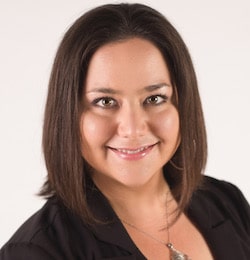 pv magazine: For those of our readers not familiar with Good Steward, can you talk about what it is that your company does?
pv magazine: For those of our readers not familiar with Good Steward, can you talk about what it is that your company does?
Mariah Lynne: Good Steward Consulting is a myriad of service offerings. We actually took a look at what the needs were for large utility-scale renewable energy development and we took an umbrella approach.
We do public outreach and communication. We do design and marketing work. We do grassroots development and we do event planning, primarily in the Midwest. And what makes us different: the approach that we take is a boots-on-the-ground, peer-to-peer communication methodology.
What we saw and what the industry has experienced, is you have large public affairs firms out of very metro areas, trying to handle rural communications. And a lot of times that falls on deaf ears, because rural America, rural Americans, tend to be more open to communication from (and more trusting of) peers. We use a peer-to-peer communication methodology where everything that we communicate is done for the rural audience by rural communication experts.
We are professionals in our field but we live either on farms or have farming backgrounds and we live in rural America. Our headquarters is in Albert Lea, Minnesota which is a small southern Minnesota town, and the backbone of our community and our region is agriculture. So, we go in boots on the ground and we take the complicated messages of renewable energy development and we massage that and deliver it as a peer-to-peer communicator to communities that are impacted by these developments and to the landowners/neighbors who are impacted.
pv magazine: So speaking of impacts – which I want to note are not all negative. We pv magazine or see a lot of conflicts over the use of agricultural land and solar. And I’ve seen this here where I live in Rhode Island, the second most densely populated state in the nation, and I’ve also seen it in Oregon. What, and more specifically who in terms of what groups of people are really driving this conflict?
Lynne: Well, you know, that’s a loaded question. In my opinion you have two groups of people. You have farmers and you have non-farmers living in rural settings. And we can talk first about the farmers themselves. For generations, for the last century plus, we have as farmers been touting the need for what we do and the good stewardship that we show for the land that we care for to create food for the world.
So, you have this deeply ingrained view as an agricultural producer that you were put here on Earth to grow food and it is something that is not just an opinion. It’s in your bones. It is deep and you have passion for it just like other people have passions for their line of work. Farmers are a special group of people that are extremely passionate about their role in feeding the world. Whether that’s row crop farming, livestock production – whatever it is, it is multigenerational, and it is a sense of pride.
If you take a look at using agricultural land for non-agricultural purposes, such as solar, what you find is a bit of a tear in the cloth of that pride. Because for generations we’ve been told that that’s what we do. We grow food. We feed the world. So, to be open to the idea of diversifying your farm – to use what you have tended to for generations for a different purpose – that’s an unsettling situation for a farmer or producer to be in.
However, these are completely unsettled times. Due to low commodity prices the average farm income in 2017 was $43,000. And the median farm income for 2018 was -$1,500. So, you’ve got these low commodity prices that are now shaking the agricultural world to its core. And it’s putting the idea of diversification or how we use our ground – it’s warming us up to that idea.
We do see a bit of a shift and an opening right now for other uses to agricultural land, and you see farmers being more apt to take a look at this opportunity. You’ve got farmers who have for generations took extreme pride in the fact that you grow food to feed the world. So, if you take acres out of growing food to feed the world and you do something else with it, it’s got to be extremely valuable to even be considered. Solar is extremely valuable.
That’s one group of people: the farmers who live in rural America who control the thousands of acres. And then you’ve got neighbors. You’ve got non-agricultural acreage owners. And you’ve got people that we often refer to as “five acres of Paradise” people.
These are people that maybe didn’t grow up on that property but when they moved out to the country they were expecting to see a certain view. And whenever your view changes, that’s obviously going to be a bit of a jolt. So, you have people who are now taking a look at these impeding projects. Maybe they haven’t been communicated with enough to help them understand what it’s going to look like, or what the impact is, or what the benefits are of the project. But you see them throwing their hands up in the air and digging their heels into the ground because they don’t want to see a change in their view.
Property rights is at the core of all of this, because you as a farmer who controls, whether it is 20 acres or 20,000 acres, as long as you are within the zoning requirements for your area you can do what you would like to do with your land that is your right as a property owner. You’ve got neighbors who are looking at a shift in their view, who may have some very genuine concerns about what that impact is going to be. Those are all things that can be addressed with communication.
We know that solar projects are safe. It’s a fact. But is it being communicated to the neighbors in these rural areas so that they can understand, really understand – not just be told, but really understand – what the implications are of these developments? Not just after they’re up, but during the entire process.
pv magazine: So to get back to the farmers. One of the things that we’ve been covering in pv magazine is that solar can be quite beneficial to farmers as it brings in a regular lease income to landowners that is not subject to the year-to-year, season-to-season, up and down vagaries of farming: a steady hedge. And because of that it’s obviously been significantly beneficial. So when we see these public meetings we see a whole lot of people who aren’t necessarily farmers coming out opposing these projects. How are the interests of the farmers represented in land use decisions?
Lynne: There’s a really good question. Everybody has a voice, right? Whether you’re in agriculture, whether you’re in manufacturing, whether you’re a neighbor, whether you’re a property owner. Everyone has a voice and everybody’s voice deserves to be heard.
Opposition is not new. We have opposition to everything. Every change, every progression – every time that we advance as a society there will be opposition. The farmers have a voice because they have property rights. And you’re right, Christian, in that what we’re seeing is because of what I said before about having that tear in the cloth.
And understand the state of agriculture right now: it is dire. It is a dire economy for agriculture. Any producer right now is struggling now, and you have opened up an opportunity to hedge against the commodity volatility that we have year-over-year as producers. You’ve introduced a lifeline.
And what we see are these farmers who may have a thousand acres, they’re not making the choice to give up farming completely, altogether. The majority of them, are looking at this lifeline and they’re taking 250 acres out of agricultural production, and they’re putting it into the production of renewable energy. They’re doing it under leases, typically they’re not selling their land off, they’re leasing their land for a term of time to create renewable energy to help power the world. Which is something they can have extreme pride in.
And that 250 acres that you might take off of 1000 acres that you run as a producer, what you’ve done there is you’ve bridged a huge gap. We’ve seen Chapter 12 bankruptcies in farm states across the Midwest. It’s happening right now. And these are the types of people who, if they have the choice to take a lifeline, should be given the ability to do that.
We cannot, as a state or as a country, tell farmers that they *need* to actively farm their ground – to the point where we’re leaving them with no option to continue. Let them choose to farm it all, none, or pieces of it and let them choose to accept a lifeline : a renewable energy development. They can put a portion of their farm into that development purpose so that they can sustain the rest of their agricultural production.
So, do the farmers have a voice? Absolutely. Unless the voice is taken away as a right for the property owner to do what they need to do on their land to survive.
What we see are those 250 acres might be taken out or maybe it’s even 50 acres maybe it’s 20 acres – depending on the size of the operation. If they take a portion or a fraction of their property out of row crop production, or out of livestock production, and they put it into a solar development they have now given themselves a hedge against commodity prices that they can be comfortable with, that can sustain their farm, that their bankers and their vendors will look at and are going to appreciate and provide value to. That farmer now may be able to go and buy another 250 acres somewhere else and put something that’s not conditionally used as farming into farming or agricultural purpose.
Farmers are business owners. They’re often multigenerational, they can be brand new. But they are business owners. And if somebody were to come to your business and tell you what you can and cannot do, to the point where you can’t diversify, to the point where you can’t have a sustainable business: How would you feel?
And that’s what we’re seeing with some state legislation. I understand and I value what’s at the core of those driving to keep agricultural use in play. But when you have the opportunity to put renewable energy production into play on those agricultural acres – it’s not a permanent use. It’s a temporary land use.
These projects can bridge the gap for farmers and rural communities. And we can’t forget about that. Farmers are the backbone of a lot of rural communities. When farmers go bankrupt and farmers have negative income it affects an entire rural community. You start to see towns drying up as a result of that.
So not only does the development of a large solar farm impact the farmer, and provide them a bridge for that gap, but it also impacts the rural communities through a lot of different ways. One – the farmer is able to continue his operation. The farmer is able to continue to buy goods and receive services in the rural communities and over and above that you’ve got additional tax revenue coming through the counties, coming to townships, coming to states. It is a win-win-win situation… if a farmer is provided the ability to make the decision that needs to be made for their property.
pv magazine: Right. So we’ve been talking this whole time about the use of land being renewable energy versus farming. But what I’m seeing when I report on this is I’m seeing a lot of projects that successfully co-locate agriculture or pollinator land with solar farms. There’s a huge movement to plant pollinator friendly crops around solar projects. There’s also you know we’ve covered studies that show that there’s an actual benefit to the grass feed for livestock. I think it’s been partially supported by solar projects. Do we need to be seeing this as an either-or can can solar be a complement to farming?
Lynne: Solar is a complete complement to farming in the sense that farmers are good stewards of the land. At the core we have to remember that when you tend to land whether it’s multigenerational or not, when you’re a farmer you are connected to that ground and you care for the ground. It becomes your baby; you know every inch of your fields, you know where it floods, you know where it’s dry, you know where you need to put extra fertilizer.
Farmers care about the soil. They care about the environment. They’re inherently in tune with what the earth needs because that’s what they tend to. So certainly you can have a solar farm and row crop agriculture or other agricultural uses side by side. And they do benefit one another. Not only does the solar farm help with hedging against commodity volatility but the solar farm and the acreage within the development – if we continue to use pollinator habitat, deep-rooted vegetation – all of that helps the land continue to basically rebirth.
We’re putting additional nutrients into the soil and we’re also letting those acres rest. And you know we have problems with things like erosion, with groundwater, with phosphorus. By taking these acres out and putting them into a temporary use situation like this, that can be pollinator friendly, can be good for the nutrients of the soil, can help with groundwater management.
If we continue to put large solar farms into play where we can let the land rest, when the solar farm gets decommissioned in the future, that land can go back into row crop production and will be – in my opinion – the healthiest soil that farmer has. Because it was given a period of time to rest and to regenerate its nutrients and that could be extremely beneficial.
We see the pollinator habitat helping with bees. We see an increase in solar honey, which I think is just a wonderful thing. We see beers that are being brewed with honey that comes from solar farms. All of these things can continue to create additional opportunities for rural Americans. We’ve seen grazing happen inside of solar farms. We’re not just producing energy, we’re also regenerating the ground and finding additional meaningful agricultural applications within the array areas.
We’re providing habitat for pollinators, for butterflies, for small burrowing animals. And we’re providing an opportunity for people who live next door that want to keep bees, that want to take advantage of having an orchard. Because now the bees are back and they’re pollinating. So it can be a catalyst for a lot of opportunity and it really isn’t all-or-nothing.
You’re changing the use of the land. But it’s providing opportunity to the rural community and it’s providing opportunity for all of us that use power. It is powering us. That’s what’s at the core of this, right Christian? We need renewable energy – if we need renewable energy to sustain us, where are we going to put it?
If you look at it from the perspective of the farmer: give them the option. Let them make their choice. And if they choose to do it – kudos to them, because what they’ve probably done in choosing to do so is secured their farming operation for generations to come. Because they’re going to be able to make it through not only this hard time in commodity price volatility but the next time too. So this is opportunity all around.
pv magazine: So to get over to the developer side. You know, I’ve seen developers approach building large solar in frankly a ham-handed way. Here in Rhode Island and also elsewhere I feel like I’ve seen them come and approach this in ways that made it was easier for local people to get upset and excited. What are the mistakes that you see developers making when they come into these proposed projects and how can these be fixed?
Lynne: That’s a really good question.
So renewable energy development is its own breed. Typically when you have any other rural economic development happening you have the land secured you have everything in place and you know that you’re going to put up a new grain elevator, or a new store, or a new restaurant and the community learns about it when everything’s been tied up, all the loose ends have been taken care of, all the t’s are crossed and the i’s are dotted, and all of a sudden an article comes out in the newspaper or something happens on Facebook, and you find out there’s going to be a new restaurant in town, right?
Everybody’s excited about it and some people might complain that it’s not the right type of food or they should choose a different location.
But everything’s already been decided. With renewable energy development, word gets out very very early, before there are answers to all of the questions. And so we find ourselves in this conundrum. When is the right time to engage the community? When’s the right time to let the community that’s going to be impacted by this project, know that the project is happening?
Well, the first step in any renewable energy development is going to be research to make sure that it’s a viable place for us to put solar, right? Whether it’s wind or solar. Is it viable? Meaning is there enough space for it. Are we going to check all the boxes with the amount of sunlight that we need? What’s the lay of the land, slope, all of that. Once you’ve got that then you move on to land acquisition – we see it in wind and we see it in solar. Typically, what happens: land agents go out and they start seeing if there’s interest to participate.
The minute that those land agents go out and start to find out whether or not there’s interest, people start to learn that there might be a project. And so questions start brewing. I think one of the disconnects with some of these developments is that there are a pool of people that believe that they can fly under the radar long-term in a rural community. The minute that somebody is talking with a farmer, that farmer is going to talk to somebody else and that farmer is going to talk to somebody else and that farmer’s going to talk to somebody else.
And soon you’ve got everybody talking about it and it ends up being like the game telephone that we used to play when we were kids, right? I tell you something, you tell someone else. When you tell someone else, it’s not the same thing that I told you. You’re putting your own spin on it. You’re understanding what I’m telling you in your own manner. And then you’re explaining it to the next person.
We have this game of telephone. Word starts spreading in these small communities. And because we’ve got the person who doesn’t know what’s going on telling other people what they believe is going on, we start to see misinformation spread very early and very quickly in the development area and everybody has questions. But again getting back to typical development we don’t have answers yet because we’re in the early stages where we’re trying to find out whether or not there’s enough interest in participating in the project to make it viable.
At the point that we know that there’s enough interest and we have enough land secured then we can start to talk about the design of the project – and that’s what everyone’s interested in right? The first question we usually get out in the field is what kind of solar panels are you putting up, where are they going to be?
Well, those questions start really early. They start during land acquisition. We don’t have answers, we can’t tell you what kind of products we’re using or where we’re going to put everything because we’re so early on in the process, right?
So hence the conundrum. When do you inform a community of what’s happening? There are developers that do this extremely well and what they do is they make sure that the people who are out in the field have the right communication methodology in hand so they’re going to be able to address questions early on. They might not be able to answer everything but they’re going to be open in their communication and they’re going to begin to set a pathway of trust with the community.
The earlier we communicate the better. Even if we can’t tell them everything. If we’re there to listen and understand what their questions are and we follow up with answers to them as soon as they’re available, and we hold meetings, and we establish a presence in the area, and we become a part of the area. We invite people – not only those participating in the project by leasing land, but also neighbors and community members –
in to get to know us and to understand what we’re doing. Then we start to see support for the projects growing and we start to also build a safe place for those that want to take the opportunity to put their land into solar or wind. We start developing a safe place for them to stand up with pride and really tout what they’re doing and the benefits of what they’re doing in a safe environment.
The really good developers out there do that: they communicate early and they communicate often. It’s all about communication. Even if we can’t give exact answers at the moment that they’re requested, if we can take those questions and we can do our best to make sure that we’re keeping those people who are interested informed and those people who aren’t interested – we’re still establishing a means for communication with us, then we’re doing the right thing for the rural community and the projects.
And those are projects that are viable and that make it through permitting. Because there’s clear and open communication and trust between the developer and the community and the participants. So, you’ve got to have that basis of trust and, in my opinion, communication is trust.
pv magazine: Is there anything that we haven’t talked about that you think is important for our readers to know about solar in farming communities and resolution to the conflict that we’ve seen to date?
Lynne: The really good news and the really bad news is what we all hear, but the majority of news is really in the middle. And it’s important for the readers to know – and for you to know Christian – that there is support for these projects out there. And as frustrating as it is when we hear the bad stories, there are an equal if not greater number of good stories. Good communities who see this, good developers who do a great job at communicating and who bring these developments into rural areas and they’re received with open arms.
Good stuff does happen. It’s not all bad and there is a lot of support for solar out there. It’s just making sure that those connections are made. So the earliest communication that’s made with a rural community is going to have an impact.
And really the deciding factor in whether or not a project is well received or not comes down to what was the quality of the first interaction with the community regarding the project. Is it high quality? Is it somebody listening and somebody being informative? Or is it: we’re here and we’re going to do this. That can really make or break a project… luckily that’s something the developer can control with the right partners in place.
This content is protected by copyright and may not be reused. If you want to cooperate with us and would like to reuse some of our content, please contact: editors@pv-magazine.com.
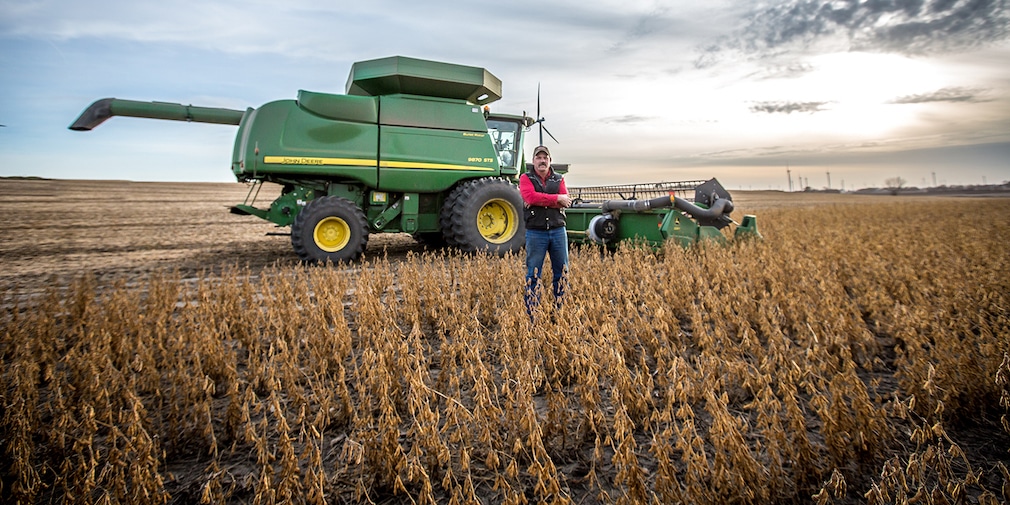
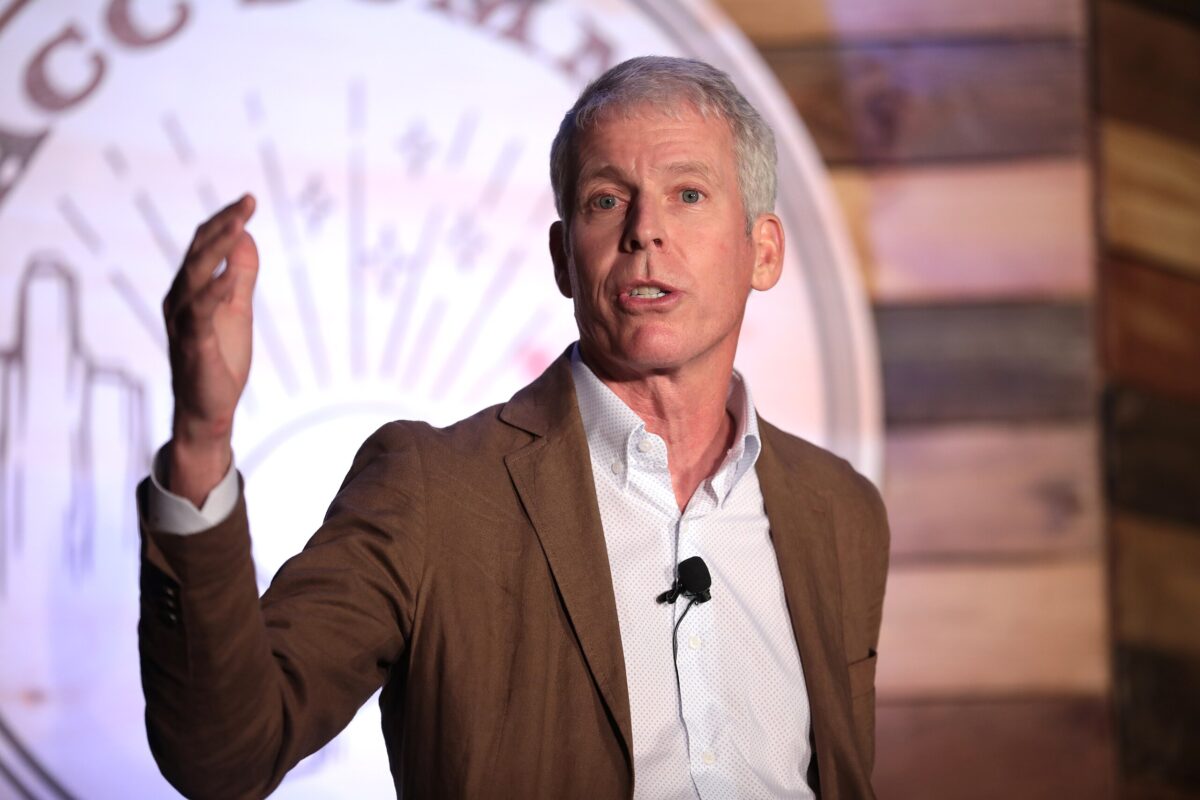



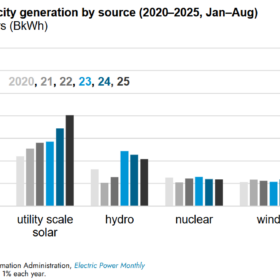

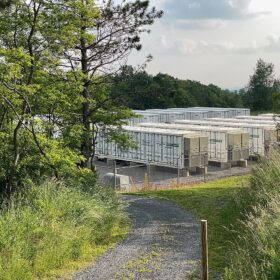
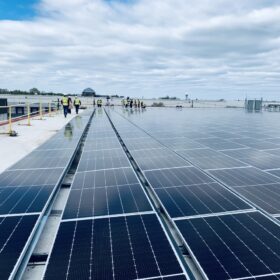
Why not let the farmers own them determine how they make best use of their land.